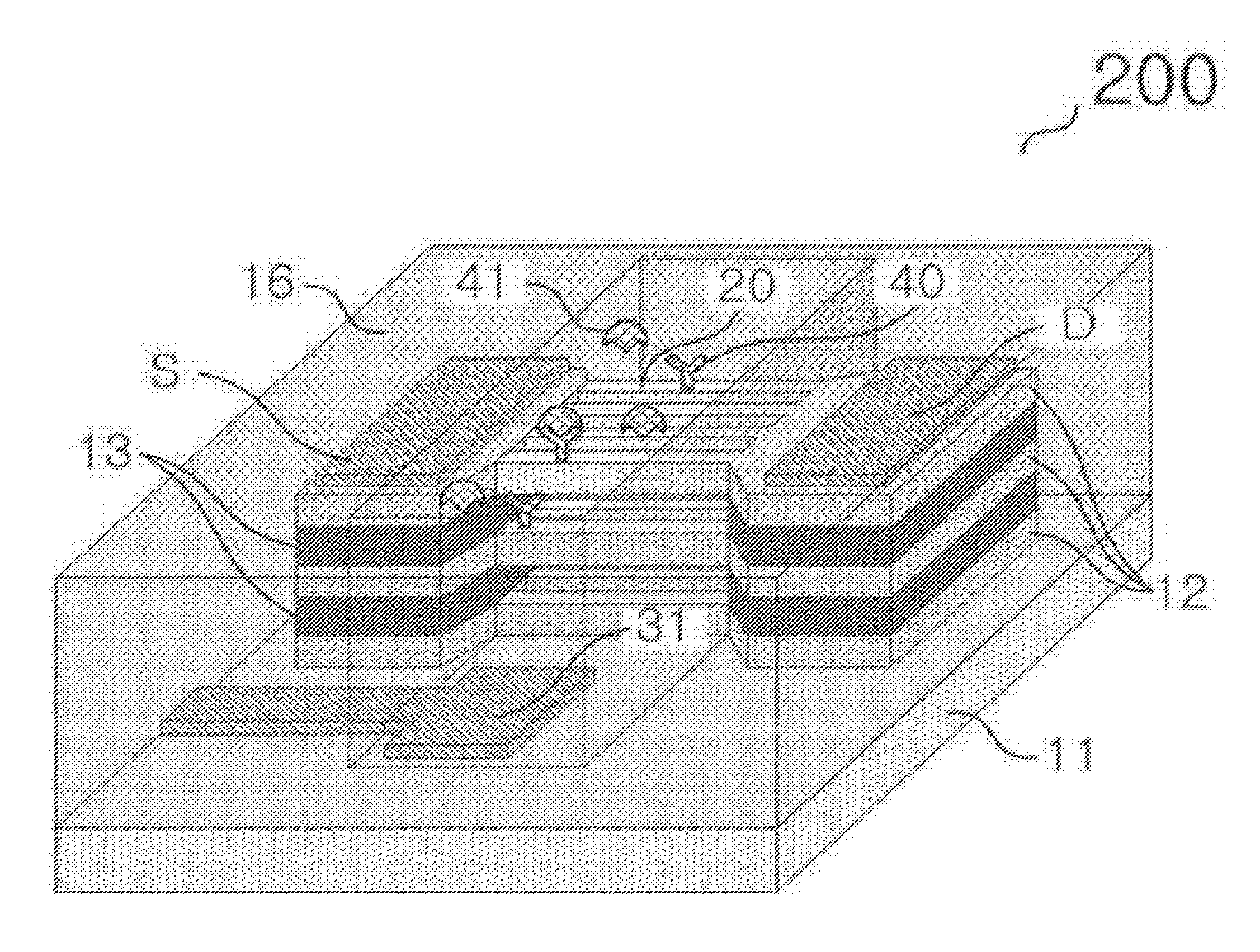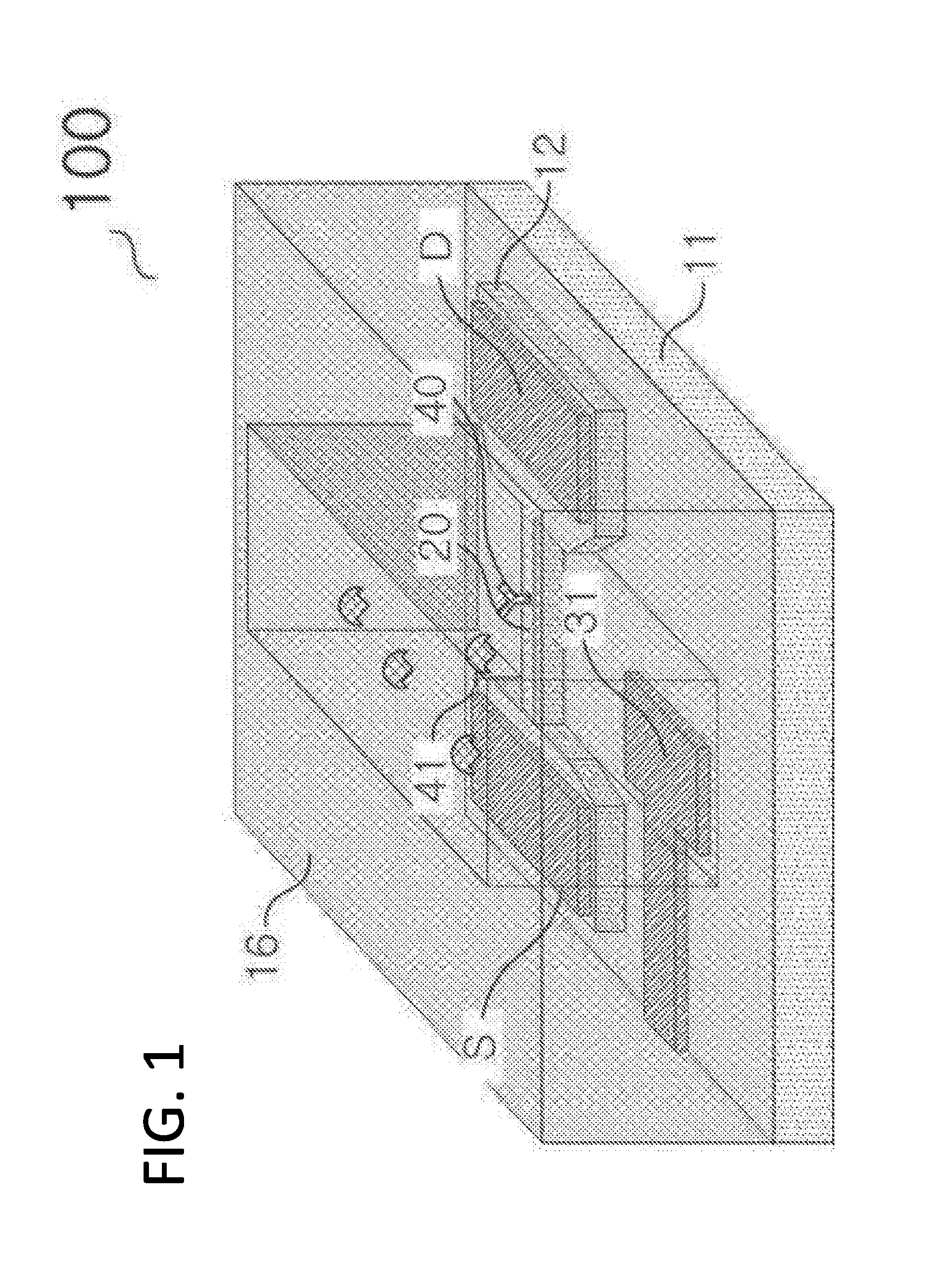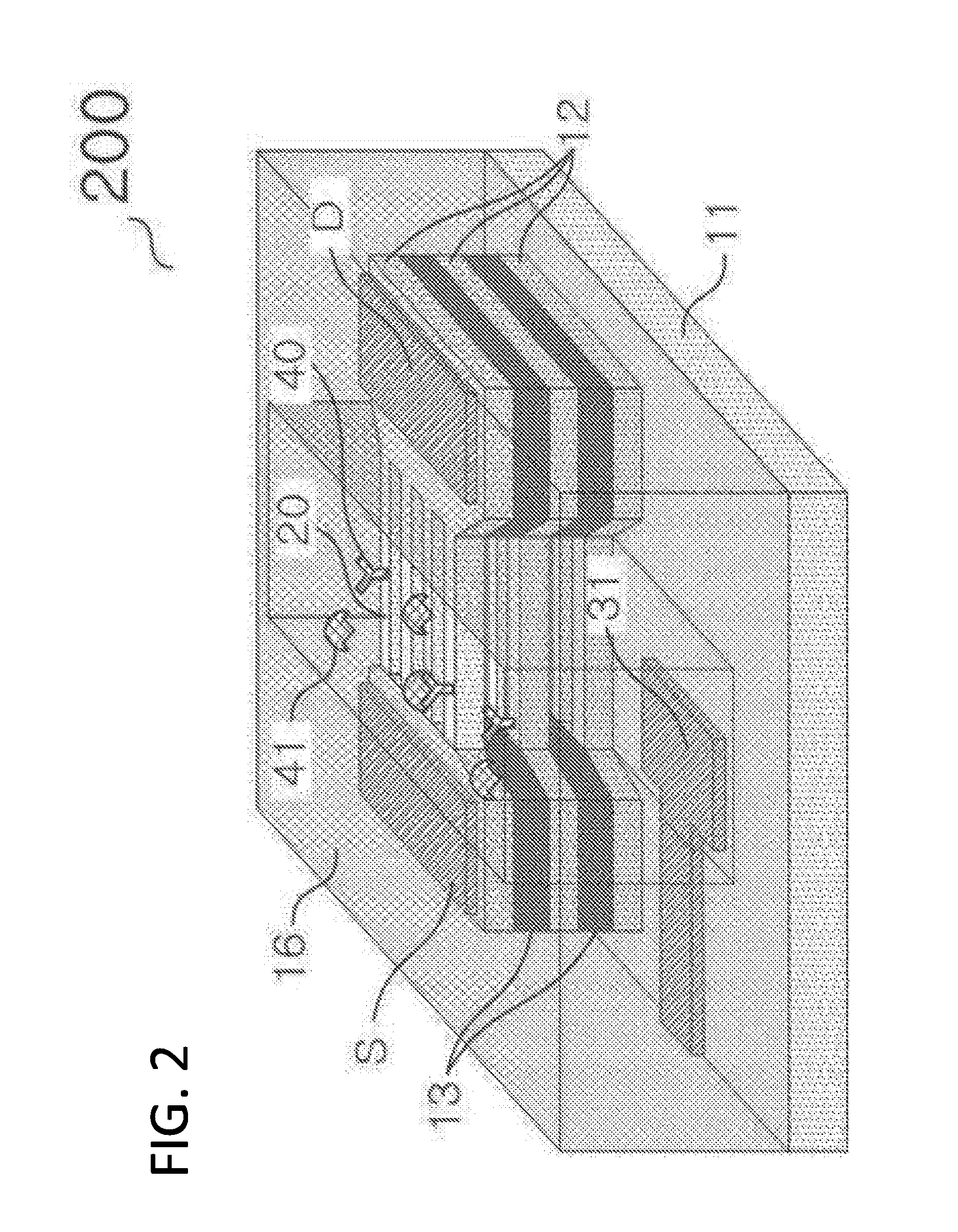Nanowire electric field effect sensor having three-dimensional stacking structure nanowire and manufacturing method therefor
a nanowire and electric field effect technology, which is applied in the field of nanowire field effect sensors comprising nanowires, can solve the problems of increasing difficulty, decreasing the number of elements per substrate area, and difficulty in maintaining the difference in properties between the nanowires at a constant level, so as to increase the probability of attachment of a target material to the nanowires of the sensor of the present invention, the effect of increasing the sensing area and increasing the sensitivity
- Summary
- Abstract
- Description
- Claims
- Application Information
AI Technical Summary
Benefits of technology
Problems solved by technology
Method used
Image
Examples
Embodiment Construction
[0030]Hereinafter, exemplary embodiments of the present invention will be described in detail with reference to the accompanying drawings.
[0031]FIG. 2 illustrates the structure of a nanowire sensor having a three-dimensional stacked nanowire structure according to the present invention.
[0032]Referring to FIG. 2, the nanowire sensor having a three-dimensional stacked nanowire structure according to the present invention is fabricated using a semiconductor stack of a semiconductor channel layer 12 and a sacrificial layer 13 made of either a dielectric material or a semiconductor that can be etched selectively with respect to the channel layer. In the semiconductor stack, the channel layer 12 and sacrificial layer 13 in a patterned nanowire portion are etched, and then the sacrificial layer 13 in the nanowire portion is selectively etched so that the interlayer contact between the nanowires will not occur. Herein, the layers of each of the source S and the drain D should be electricall...
PUM
| Property | Measurement | Unit |
|---|---|---|
| width | aaaaa | aaaaa |
| threshold voltage | aaaaa | aaaaa |
| threshold voltage | aaaaa | aaaaa |
Abstract
Description
Claims
Application Information
 Login to View More
Login to View More - R&D
- Intellectual Property
- Life Sciences
- Materials
- Tech Scout
- Unparalleled Data Quality
- Higher Quality Content
- 60% Fewer Hallucinations
Browse by: Latest US Patents, China's latest patents, Technical Efficacy Thesaurus, Application Domain, Technology Topic, Popular Technical Reports.
© 2025 PatSnap. All rights reserved.Legal|Privacy policy|Modern Slavery Act Transparency Statement|Sitemap|About US| Contact US: help@patsnap.com



